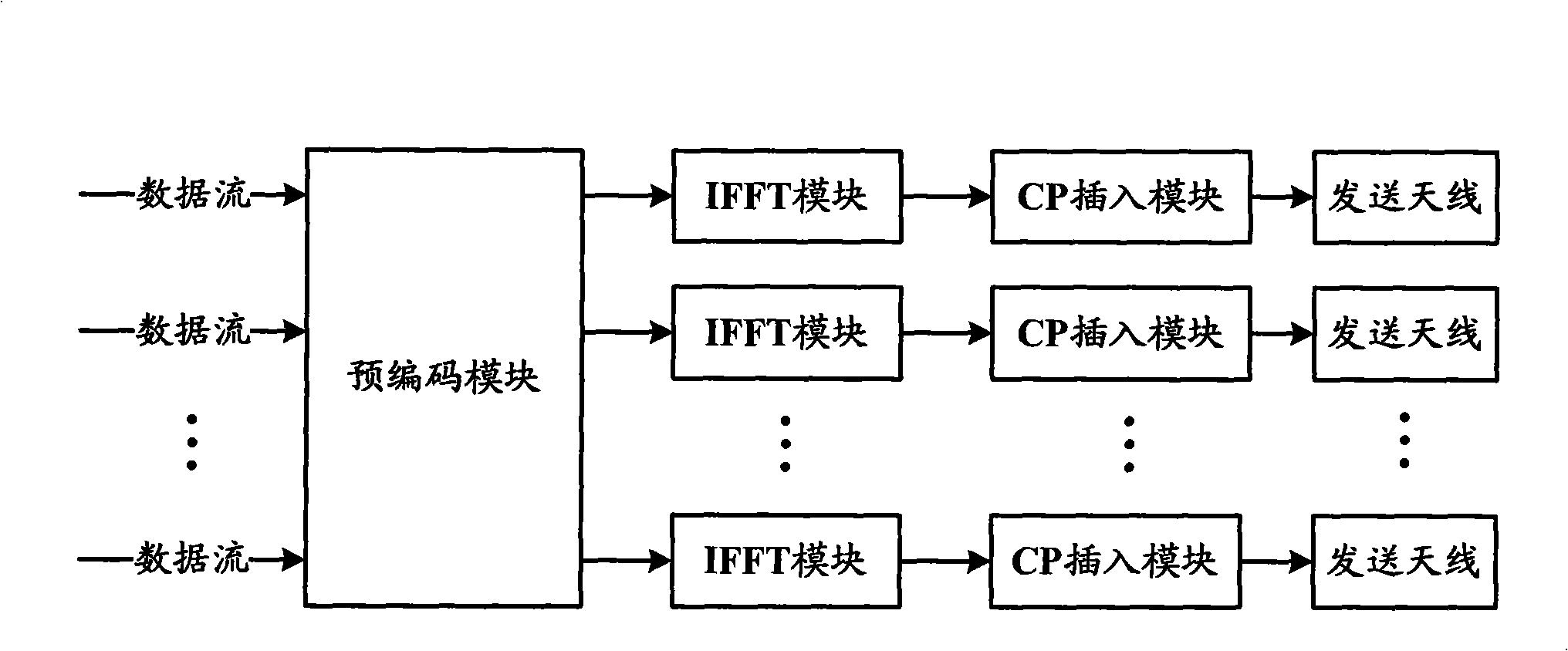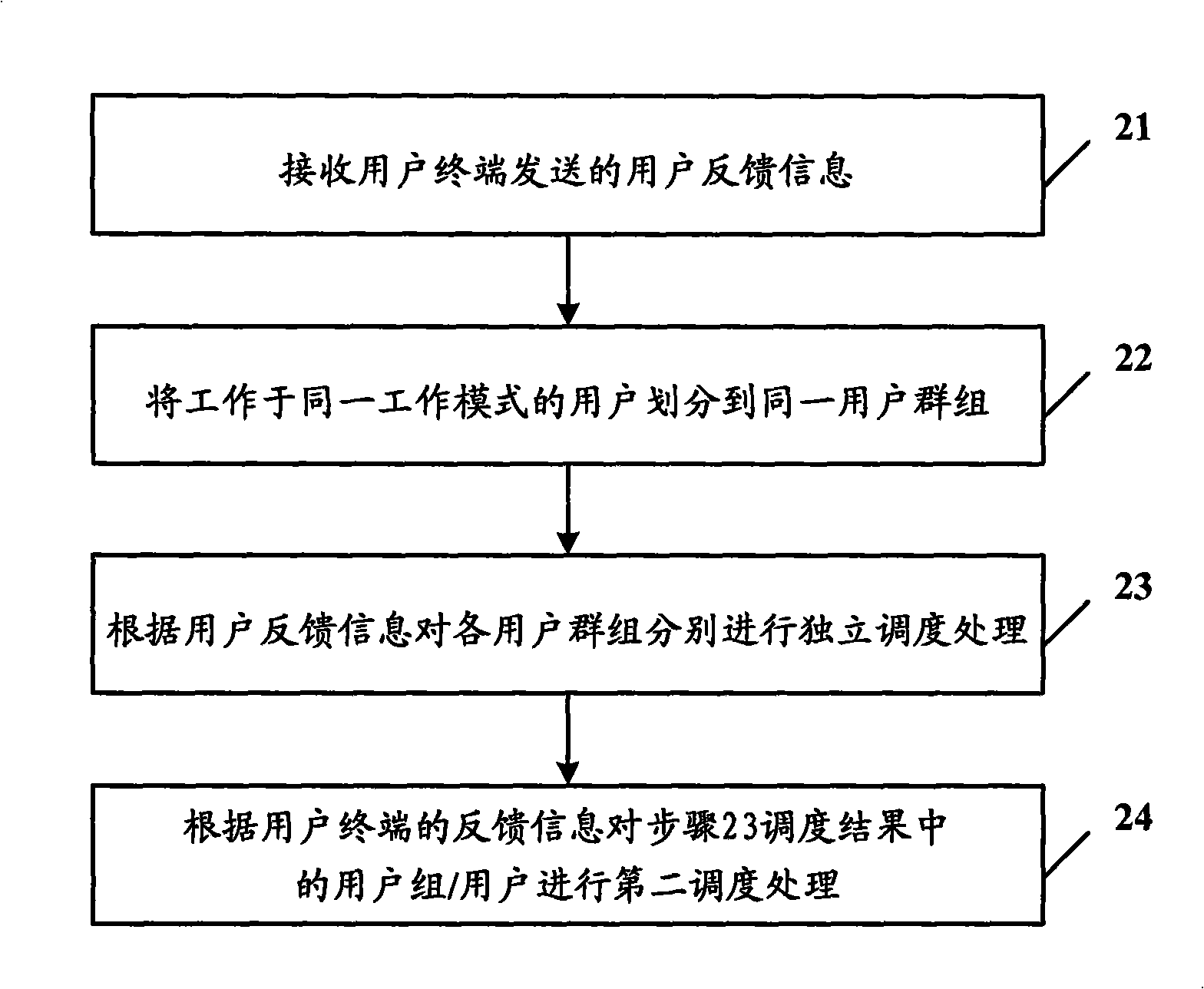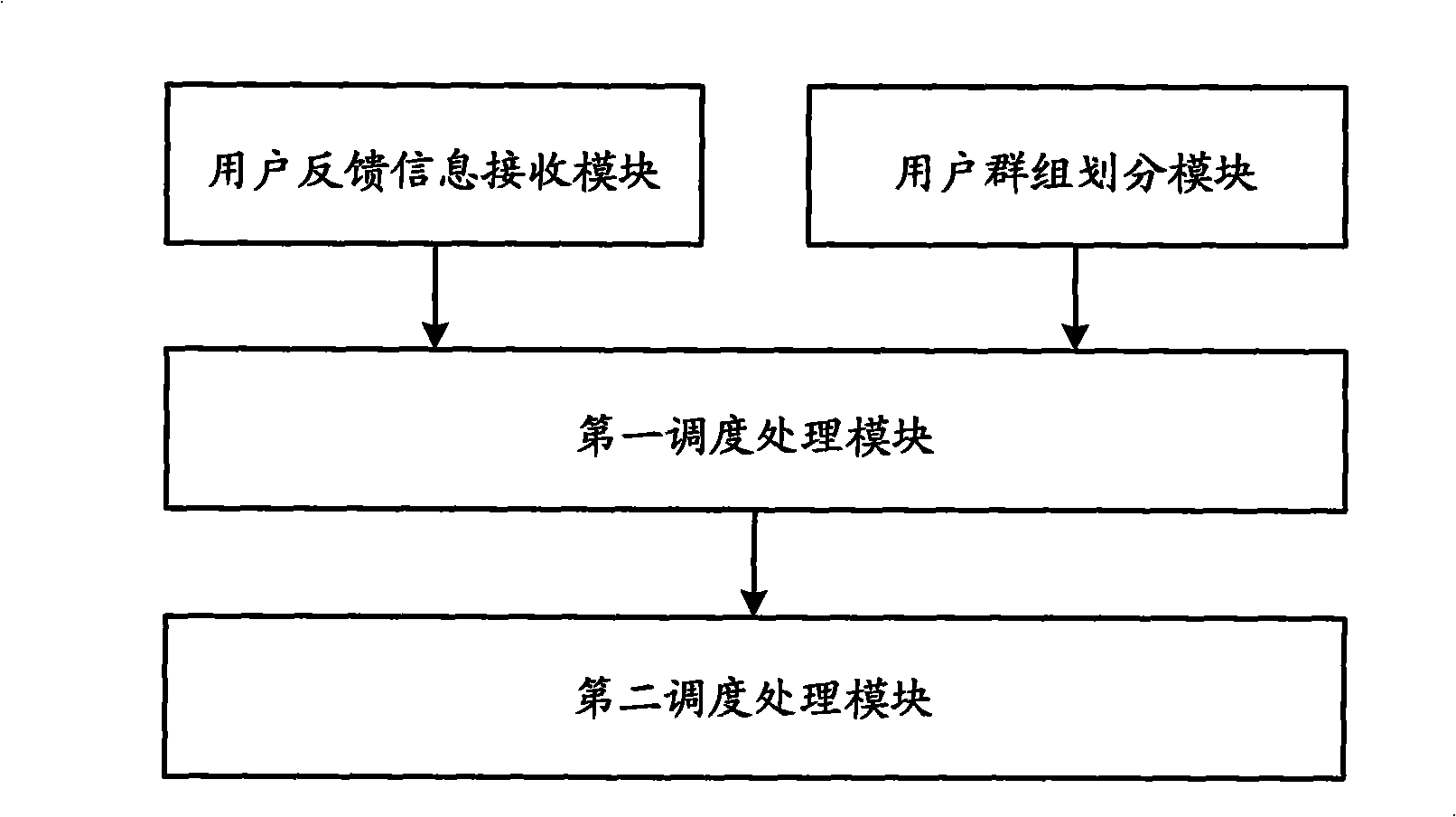Method and apparatus for scheduling precoding system based on code book
A scheduling method and precoding technology, applied in baseband system components, synchronization/start-stop systems, orthogonal multiplexing systems, etc., can solve the problem that the PF scheduling algorithm cannot be implemented.
- Summary
- Abstract
- Description
- Claims
- Application Information
AI Technical Summary
Problems solved by technology
Method used
Image
Examples
no. 1 example
[0130] In the first embodiment of the present invention, all users work in SDMA mode (that is, only users 1 to 12 in the cell), and the PF scheduling algorithm is used in steps 412, 413, and 414.
[0131] The method of the first embodiment of the present invention specifically includes the following steps:
[0132] In step A1, users with the same PMI and PVI are grouped into a group, and the result of the grouping is shown in the user feedback information table working in SDMA mode, that is, users 1, 2, and 3 are in the same group, corresponding to the first matrix. The first vector; users 4, 5, and 6 are in the same group, corresponding to the second vector of the first matrix; users 7, 8, and 9 are in the same group, corresponding to the first vector of the second matrix; users 10, 11, 12 are in the same group, corresponding to the second vector of the second matrix.
[0133] Step A2, use the PF algorithm to perform multi-user scheduling in each group, assuming that 2 users...
no. 2 example
[0143] In the second embodiment of the present invention, all users work in SDMA mode (that is, only users 1 to 12), and use PF, MaxC / I, and PF scheduling algorithms in steps 412, 413, and 414, respectively.
[0144] The method of the second embodiment of the present invention specifically includes the following steps:
[0145] Step B1, divide users with the same PMI and PVI into a group, and the result of grouping is shown in the user feedback information table working in SDMA mode, that is, users 1, 2, and 3 are in the same group, corresponding to the first matrix. The first vector; users 4, 5, and 6 are in the same group, corresponding to the second vector of the first matrix; users 7, 8, and 9 are in the same group, corresponding to the first vector of the second matrix; users 10, 11, 12 are in the same group, corresponding to the second vector of the second matrix.
[0146]Step B2, use the PF algorithm to perform multi-user scheduling in each group, assuming that 2 users...
no. 3 example
[0151] In the third embodiment of the present invention, all users work in SDMA mode (that is, only users 1 to 12), and PF, PF, and MaxC / I scheduling algorithms are used in steps 412, 413, and 414, respectively.
[0152] The method of the third embodiment of the present invention specifically includes the following steps:
[0153] In step C1, users with the same PMI and PVI are grouped into a group. The grouping results are shown in the user feedback information table working in SDMA mode, that is, users 1, 2, and 3 are in the same group, corresponding to the first matrix. The first vector; users 4, 5, and 6 are in the same group, corresponding to the second vector of the first matrix; users 7, 8, and 9 are in the same group, corresponding to the first vector of the second matrix; users 10, 11, 12 are in the same group, corresponding to the second vector of the second matrix.
[0154] Step C2, use the PF algorithm to perform multi-user scheduling in each group, assuming that ...
PUM
 Login to View More
Login to View More Abstract
Description
Claims
Application Information
 Login to View More
Login to View More - R&D
- Intellectual Property
- Life Sciences
- Materials
- Tech Scout
- Unparalleled Data Quality
- Higher Quality Content
- 60% Fewer Hallucinations
Browse by: Latest US Patents, China's latest patents, Technical Efficacy Thesaurus, Application Domain, Technology Topic, Popular Technical Reports.
© 2025 PatSnap. All rights reserved.Legal|Privacy policy|Modern Slavery Act Transparency Statement|Sitemap|About US| Contact US: help@patsnap.com



